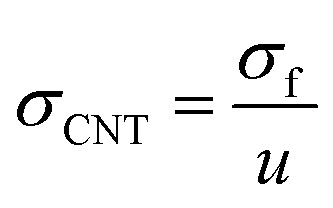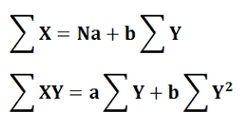Typically now, posting is an automated function at the end of the day or some other financial period, carried out by an accounting software application. In the hard copy world, several journals could have their contents transferred to the general ledger.
Is Accounts Payable a revenue or expense?
Officially, there are two types of accounting methods, which dictate how the company’s transactions are recorded in the company’s financial books: cash-basis accounting and accrual accounting. The key difference between the two types is how the company records cash coming into and going out of the business.
It’s more important to think about what your company can do with that asset in the future. List all non-current assets, also known as long-term assets. Non-current assets are defined as a company’s value of property, plant, and equipment that can be used for more than 1 year, minus depreciation. The general ledge will indicate the current value of long-term assets. The basic model says that assets equal liabilities plus owner’s equity.
In other words, it’s the amount of money owed to other people. The bank has a claim to the business building or land that is mortgaged. In historical cost accounting, the accounting data are verifiable since the transactions are recorded on the basis of source documents such as vouchers, What is bookkeeping receipts, cash memos, invoices, etc. These principles are used in every step of the accounting process for the proper representation of the financial position of the business. Start with a trial balance report to review the balances of all of your accounts in one place.
How to Evaluate a Company’s Balance Sheet
Check the details of the entry in the ledger to be sure that the entry posted properly and without a system error. Some unbalanced accounts are the result https://www.bookstime.com/ of journal entries posting twice unintentionally. It represents the amount ‘permanently’ contributed by the owners (though this is a simplification).
Review each journal entry posted in the accounts for which you are uncertain. Look through the paperwork supporting the journal entry to confirm that the entry was posted correctly and posted to the appropriate period.
Given the options below, identify the correct accounting equation formula. The amount of net income or net loss is needed to complete the statement of owner’s equity. Al paid $300 as a cash down payment and will pay the balance in 30 days. Short-term debt, also called current liabilities, is a firm’s financial obligations that are expected to be paid off within a year.
Entrepreneurs are fascinated by the income statement but turn a disinterested eye to other components of financial reporting like the balance sheet. It’s unfortunate, too, because this is one of the most important types of financial reports. If your small business uses the double entry accounting system, you may have heard the term “accounting equation.” What does this mean, and why does it matter to your business? The accounting equation is fundamental to the double-entry bookkeeping practice.
What Are the Four Basic Financial Statements in Accounting?
Every transaction is expressed as both a credit and debit, the double entry that gives the system its name and builds in a way to identify many data entry errors. You may not be aware of the double entry process if you are using accounting software, since many programs take care of these details automatically. The preparation of the financial statements is the summarizing phase of accounting. The preparation of the financial statements is the seventh step in the 9-step accounting cycle.
An undergraduate degree is most often required for any accounting career, while previous master’s work, especially in the accounting field, is often strongly preferred. Below, we’ll explore the nuances of each common area of accounting. Current assets are all assets that can be reasonably converted to cash within one year. They are commonly used to measure the liquidity of a company. If assets are $8,000 and liabilities are $2,000, owner’s equity is $10,000.
In other words, the total assets of a firm equal the total of its liabilities and owner’s equity. Furthermore, revenue increases the owner’s equity and expenses decrease the owner’s equity. In the days of pen and paper accounting systems, the journal served as the working copy of the ledger.

- Al paid $300 as a cash down payment and will pay the balance in 30 days.
- Start with a trial balance report to review the balances of all of your accounts in one place.
- This transaction decreases one type of asset (cash) by $5,000, increases another type of asset (vehicles) by $15,000, and increases a liability (notes payable) by $10,000.
We will take a look at them first before getting into the whole process for you to have a picture of what we are trying to produce in an accounting system. Numbers are the foundation of any business — and no one knows numbers better than accounting and finance professionals. But to succeed the accounting equation can be expressed as as a financial professional in today’s competitive landscape, you need more than numerical know-how; you need the expertise to conduct analysis and leverage data to drive business decisions. That’s exactly what the online Master of Accountancy from Ohio University prepares you to do.

Example balance sheet:
Multiple types of accounting careers exist within the financial industry, with each performing a differing range of functions. Branches of accounting vary based on the employment setting, range of responsibilities and daily activities, types of available advancement, and other factors.
A company has assets of $56,320 and liabilities of $29,500. Other current liabilities can include notes payable and accrued expenses. Current liabilities are differentiated from long-term liabilities because current liabilities are short-term obligations that are typically due in 12 months or less. Shareholders’ equity is the amount that would be returned to shareholders if all the company’s assets were liquidated and all its debts repaid. Liabilities are claims on the company assets by other companies or people.
This article will break down various types of accounting and their careers into four broad categories. These four branches include corporate, public, government, and forensic accounting.
Once a physical book formatted for a system called double entry accounting, the ledger now has digital representations in accounting software. This transaction affects only the assets of the equation; therefore there is no corresponding effect in liabilities or shareholder’s equity on the right side of the equation. Journal Entries are the building blocks retained earnings of accounting, from reporting to auditing journal entries (which consist of Debits and Credits). Without proper journal entries, companies’ financial statements would be inaccurate and a complete mess. If a business issued a check for $1,000 to pay for two months rent in advance, analyze the effect on the firms’ assets, liabilities and owner’s equity.
Another way to say this same thing is that your $1,000 cash sale affects both your balance sheet (because cash increases) and your income statement (because sales revenue is earned). Maintaining the financial documents necessary to properly track the performance of a business centers around the ledger.
The company’s debts will fluctuate over time, but this does not affect whether they are considered current or fixed liabilities. For example, a company’s pension plan obligations will change as more employees retire, but it will never be a current liability. This section includes shareholder contributions and the company’s earnings. You can find this information in the company’s general ledger.
Its applications in accountancy and economics are thus diverse. Put in simpler terms, a credit to Accounts Payable will increase the liability account while a debit will decrease bookkeeping it. The next activity should help you to understand the importance of both forms of the accounting equation. An error in journal entries could cause an unbalanced balance sheet.
The trial balance report lists every ledger account that has a balance for the reporting period. The omission of zero balance accounts helps you review only the accounts that are applicable to the reporting cycle, saving time and confusion. Review the account balances as they https://www.bookstime.com/articles/the-accounting-equation-may-be-expressed-as appear in the trial balance report. If there are any accounts that look incorrect, highlight them on the list or make a note on a piece of paper to review the activity in the account. The length of time that your company has held the asset isn’t relevant on a balance sheet.
Can someone help me to explain why the accounting equation should always balance?
Normally the remainder of the owners’ equity is profit made by the company but not yet distributed to the owners. This explanation is an oversimplification as there are different classes of share capital – each with different rights and different types of reserves. Recalculate the retained earnings balance and make sure it uses the right data from the general ledger. However, there are more ways to troubleshoot your balance sheet. Current liabilities are added to the owner’s equity, but fixed liabilities are not.